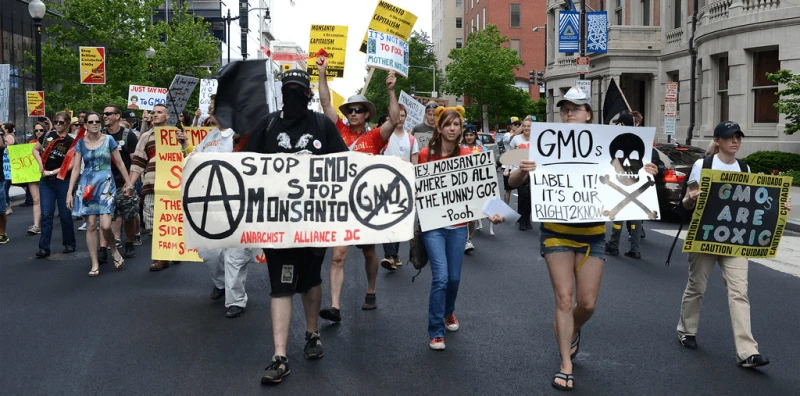Cost of GMO bans: Global crop assessment finds GMO restrictions limit food production to ⅓ of potential, with poorer countries hit hardest
Cost of GMO bans: Global crop assessment finds GMO restrictions limit food production to ⅓ of potential, with poorer countries hit hardest


How costly are GM bans? To find out, we calculate by how much yields would have been higher in 2019 had all bans on cultivation been lifted ten years before. The result… shows that GM bans mainly hurt Sub-Saharan Africa. Not only because the region is relatively poor and warm, but also because it grows substantial amounts of cotton and maize. Moreover, Sub-Saharan Africa and other low-income countries have large agricultural sectors, so the cost of GM bans relative to their total economies would be disproportionately larger than in richer countries.
At the global level, we find that cost of GM bans in terms of lost output was about US$69 billion in 2019. As our estimated realized gain was $39 billion, it follows that only one-third of the potential of the currently available GM varieties has been realized. The one-third is an average for the four crops, however. Without bans, the world would have produced 13 percent more cotton, 28 percent more maize, 26 percent more rapeseed, and 4 percent more soybean in 2019.
Were Europe to adopt GM crops, emissions could be cut by 33 million tonnes per year, most of which would come from reduced land use. Our results suggest that the scope for reducing emissions this way is even greater in developing countries, where the yield advantage of GM crops is larger. So although valid concerns about their environmental impact remain, our study reinforces the current scientific consensus that GM crops are net positive for the environment.
This is an excerpt. Read the original post here

 | Videos | More... |

Video: Nuclear energy will destroy us? Global warming is an existential threat? Chemicals are massacring bees? Donate to the Green Industrial Complex!
 | Bees & Pollinators | More... |

GLP podcast: Science journalism is a mess. Here’s how to fix it

Mosquito massacre: Can we safely tackle malaria with a CRISPR gene drive?

Are we facing an ‘Insect Apocalypse’ caused by ‘intensive, industrial’ farming and agricultural chemicals? The media say yes; Science says ‘no’
 | Infographics | More... |

Infographic: Global regulatory and health research agencies on whether glyphosate causes cancer
 | GMO FAQs | More... |

Why is there controversy over GMO foods but not GMO drugs?

How are GMOs labeled around the world?

How does genetic engineering differ from conventional breeding?
 | GLP Profiles | More... |

Alex Jones: Right-wing conspiracy theorist stokes fear of GMOs, pesticides to sell ‘health supplements’




 Viewpoint — Fact checking MAHA mythmakers: How wellness influencers and RFK, Jr. undermine American science and health
Viewpoint — Fact checking MAHA mythmakers: How wellness influencers and RFK, Jr. undermine American science and health Viewpoint: Video — Big Solar is gobbling up productive agricultural land and hurting farmers yet providing little energy or sustainabilty gains
Viewpoint: Video — Big Solar is gobbling up productive agricultural land and hurting farmers yet providing little energy or sustainabilty gains Fighting deforestation with CO2: Biotechnology breakthrough creates sustainable palm oil alternative for cosmetics
Fighting deforestation with CO2: Biotechnology breakthrough creates sustainable palm oil alternative for cosmetics Trust issues: What happens when therapists use ChatGPT?
Trust issues: What happens when therapists use ChatGPT? 30-year-old tomato line shows genetic resistance to devastating virus
30-year-old tomato line shows genetic resistance to devastating virus California, Washington, Oregon forge immunization alliance to safeguard vaccine access against federal undermining
California, Washington, Oregon forge immunization alliance to safeguard vaccine access against federal undermining The free-range chicken dilemma: Better for birds, but with substantial costs
The free-range chicken dilemma: Better for birds, but with substantial costs ‘You have to treat the brain first’: Rethinking chronic pain with Sanjay Gupta
‘You have to treat the brain first’: Rethinking chronic pain with Sanjay Gupta
